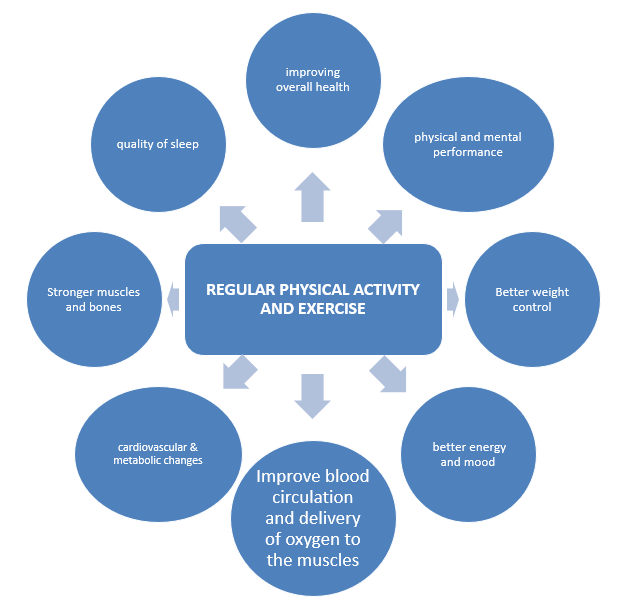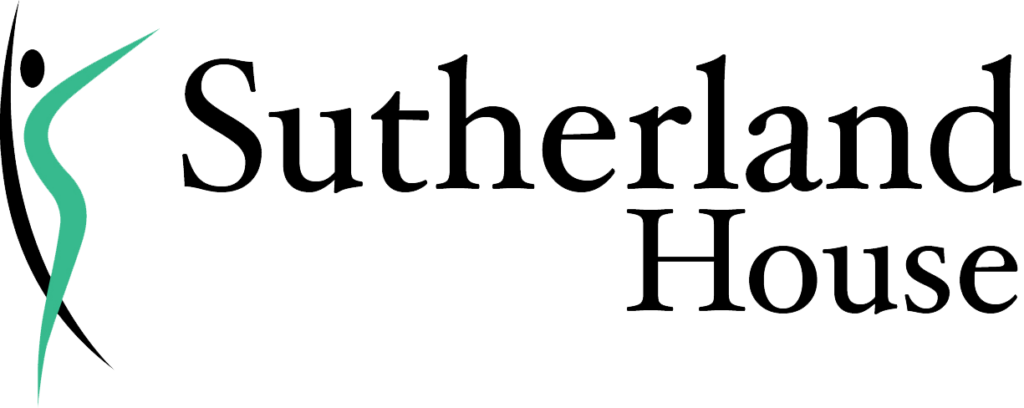Benefits of Regular Physical Activity and Exercises
Nowadays, regular physical activity and exercises are considered as medicine.
Principally, because regular physical activity/exercise can reduce the risk of many chronic conditions including heart disease, stroke, type 2 diabetes, obesity, mental health problems and musculoskeletal conditions.
Although physical activity and exercise are terms used interchangeably, their definitions differ:
– Physical Activity: is any body movement produced by skeletal muscles that increases energy expenditure above resting level.
– Exercise: is a subcategory of physical activity that is planned, structured, repetitive, and conducive to maintenance or improvement of physical fitness/performance and health indicators.
Physical activity/exercise is an important element in the prevention and treatment of chronic disease, may reduce the occurrence/severity of conditions related to unhealthy lifestyles and produce long-term effects on health.

Also, it is associated with reducing the effects of biological and functional ageing (physical changes that reduce the efficiency of body systems).
The benefits of an active lifestyle go beyond just the physical factors; they are psychological, personal and social aspects, as well.
Overall, strong evidence demonstrates that individuals who are more active, compared to the less active:
- have lower rates of all-cause mortality, heart disease, high blood pressure, stroke, type 2 diabetes, metabolic syndrome, and depression
- exhibit a higher level of cardiorespiratory and muscular fitness
- are more likely to achieve weight maintenance, have a healthier body mass and composition
The current guidelines recommend that adults (18–64 years) and older adults (>65 years) should aim to be active daily:
1. Over a week, activity should add up to at least 150 minutes (2½ hours) of moderate intensity activity in bouts of 10 minutes or more – one way to approach this is to do 30 minutes on at least 5 days a week.
2. Alternatively, comparable benefits can be achieved through 75 minutes of vigorous intensity activity spread across the week or combinations of moderate and vigorous intensity activity.
3. All adults should minimise the amount of time spent being sedentary (sitting) for extended periods. Also, undertake physical activity to improve muscle strength on at least two days a week.
4. Older adults at risk of falls should incorporate physical activity to improve balance and coordination on at least two days a week.
However, exercise also may produce health risk factors, such as: musculoskeletal and spinal injuries, pain, heart complications, and even sudden death.
Doses of moderate physical activity equivalent to meeting current recommendations may attenuate or eliminate those risk factors.
To get in touch with a team member or practitioner, call
020 8458 7869
You can also check practitioner availability and book appointments online.
Sutherland House Physiologist
Dr. Alexsander Guimarães BSc (Hons), MSc, PhD
Clinical Exercise Physiologist
Health & Lifestyle Assessments
2 – 3 appointments
- 1 assessment session
- 1 to discuss results
Cognitive assessment & heart rate parameters during performance of tests.
2-3 appointments
- 2 assessment sessions
- 1 to discuss results
5 Star Patient Reviews
![]()
North West London, East Finchley, Barnet, Edgware, Golders Green
To get in touch with a team member or practitioner, call
020 8458 7869
You can also check practitioner availability and book appointments online.


